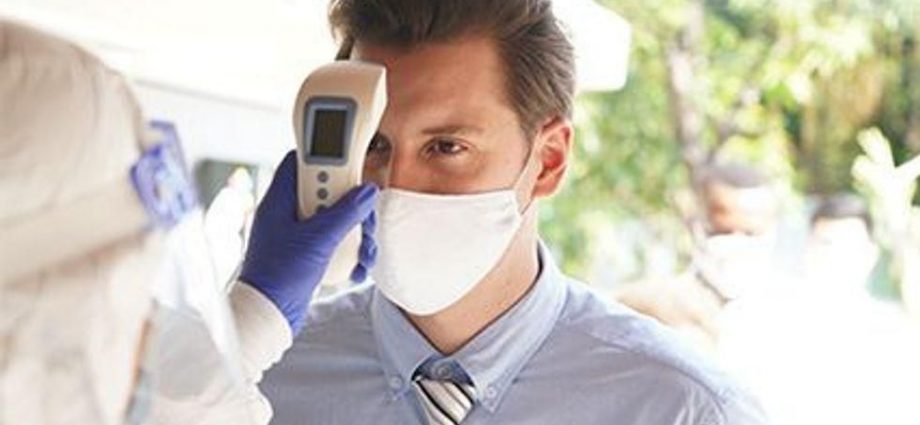FRIDAY, Dec. 17, 2021 (HealthDay News) — By this time, roughly 21 months into the pandemic, everyone should have masks and know how to wear them.
Yet, go into a grocery store, a church or a holiday event where masks are required and you’re likely to see people wearing masks that are falling off their nose or have gaps at the sides.
Now, new research arrives at what works best: When it comes to keeping the COVID-19 virus to yourself, whether you know if you have it or not, tight fit matters. So, too, do the materials.
Mask-wearing is an evolving science, so researchers from the U.S. National Institute for Occupational Safety and Health (NIOSH) looked at whether modifying how a face mask fits can keep the virus contained.
“We actually had published an earlier study this year, in February of 2021, and we had looked at certain mask fit modifications, including double masking, also the knotted and tucked method. And we found that those two modifications, they worked really well and enhanced source control. So, we wanted to look at and see some of the other modifications that were out there,” said Francoise Blachere, a research biologist at the NIOSH.
Blachere explained that source control is blocking any type of respiratory aerosols or droplets from escaping the wearer’s mouth into the environment.
While both cloth masks and medical masks block respiratory aerosols, three-ply medical masks are better at source control – keeping those aerosols from escaping the wearer’s mask, Blachere said, but the caveat is that cloth masks tend to fit better and tighter than medical masks.
Double masking, tight fit make big difference
“I’ll have to say that double masking, that’s where we layer a three-ply cloth mask over a medical mask. And then also when you secure a medical mask with an elastic strap, or they refer to it as an elastic brace, we found that both of these modifications really enhanced the fit of a mask and also improved source control,” Blachere said.
It’s definitely important, whether you’re wearing a medical or cloth mask or both, that it completely covers the mouth and nose and has a snug fit around the face, Blachere noted.
“Anytime you get any type of gapping or leaks, that’s when you actually see the aerosols escaping from the mask,” Blachere said.
The researchers worked with both manikins and real people for the study, using a source control measurement system to perform simulated coughs and exhalations. They were evaluating medical masks and cloth masks, but not respirators, such as N95 masks or surgical masks.
The investigators found that wearing a medical mask without modifications blocked greater than 56% of cough aerosols and more than 42% of exhaled aerosols.
When they modified the fit by crossing the ear loops or placing a bracket under the mask, it didn’t improve the masks. When they used ear loop toggles, an ear loop strap or knotted and tucked the mask, that increased the performance of the mask.
Most effective was wearing a cloth mask over a medical mask and using a mask brace. The double masking blocked between roughly 85% and 91% of coughed or exhaled aerosols. Putting a brace over a medical mask blocked greater than or equal to 95% of cough aerosols and at least 99% of exhaled aerosols, the findings showed.
The report was published online Dec. 15 in the American Journal of Infection Control.
“Masks have become fairly controversial and, so, I think the more science that we can build around their effectiveness is really important for people because they need to know that what they’re doing is going to make a difference,” said Ann Marie Pettis, president of the Association for Professionals in Infection Control and Epidemiology (APIC), which publishes the American Journal of Infection Control.
Pettis said that while double masking with an elastic brace appears to be the most effective option, not everyone is comfortable with those extra layers, sometimes because of breathing conditions.
She suggested that wearing a good-fitting mask, even if it’s a single mask, would be better than not wearing any mask or wearing a poorly fitted one.
“I think one of the ways I look at this is we can’t let perfect be the enemy of good,” Pettis said. “I think there’s layers of protection, but you have to individualize things. And, so, there’s basic principles, basic tenets that people can follow but again, one size never fits all.”
Pettis recommends that people use caution about where they get their information about wearing masks, citing APIC and the U.S. Centers for Disease Control and Prevention as good resources.
Blachere added, “I think the take-home message here is that the performance of a face mask, when worn as a source control device, it depends both on the ability of the mask to filter aerosols and also on how well it fits. I think if we keep those two things in mind – fit and filtration – and keep wearing a mask, I think that’s the right idea.”
More information
UNC Health has a video showing one method for tightening your medical mask.
SOURCES: Francoise Blachere, MSc, research biologist, National Institute for Occupational Safety and Health, Washington, D.C.; Ann Marie Pettis, RN, BSN, president, Association for Professionals in Infection Control and Epidemiology, and director, infection prevention, University of Rochester Medicine, New York; American Journal of Infection Control, Dec. 15, 2021, online
Copyright © 2025 HealthDay. All rights reserved.

